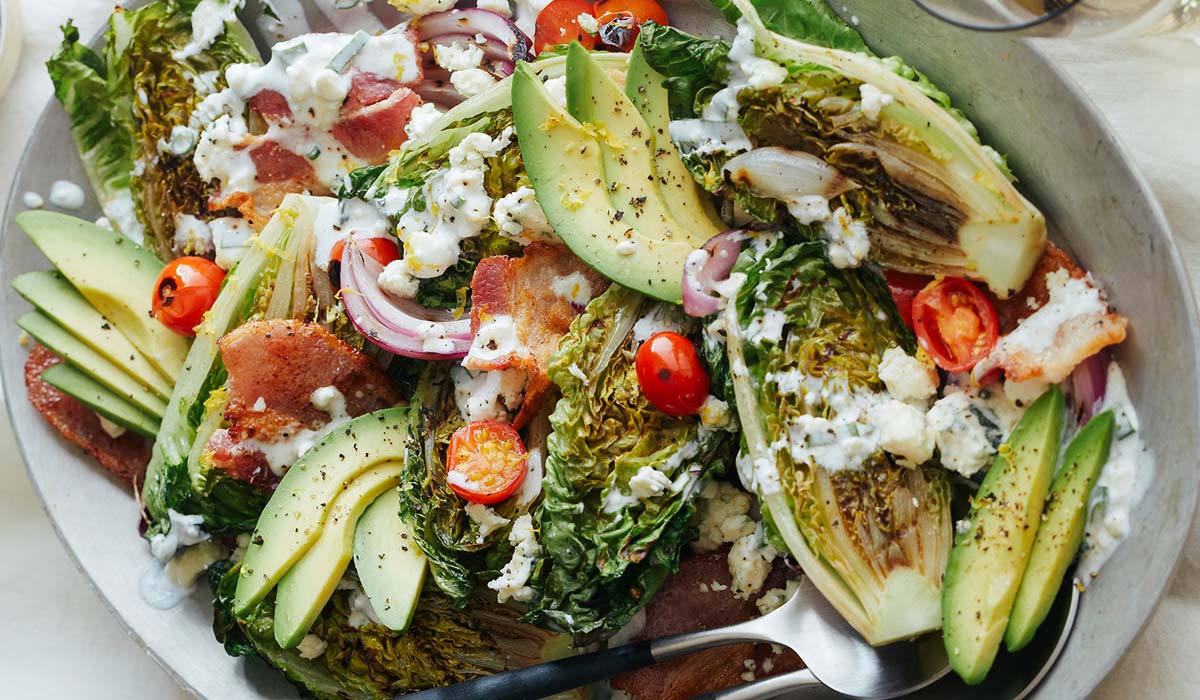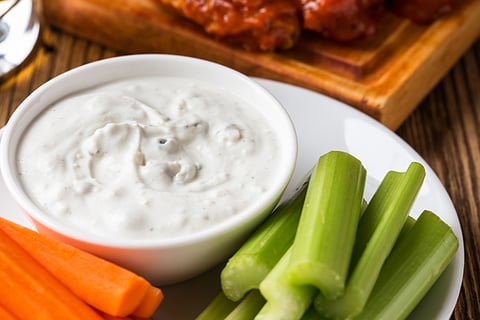
Salad Dressings and Sauces
The well-documented consumer craving for clean labels has put all food manufacturers on notice to tighten up and reinvent. The health-halo revolution, attributed to Millennials, is driving salad dressing and sauce makers to fewer and fresher ingredients while delivering bolder flavors.
Trendy buzzwords such as protein, gluten-free, low-carb, paleo, keto and organic positively drive consumers’ perception of the healthfulness of the product, creating that health halo—a factor that now lends to craveability. Coming to market with flavorful representations that readily deliver on these concepts is a worthy goal when developing and marketing tasty and health-forward new sauces and dressings.
Ingredients That Contribute to the Health Halo

In consumers’ minds, fewer ingredients contributes to the health halo. Some 60% agree that food products with fewer ingredients tend to be healthier, according to Mintel’s Better for You Eating Trends - US - August 2018 report.
When selecting the key ingredients to include, the addition of vegetables, nuts, seeds and spices, especially those of superfood status, are a good place to start, not only in flavor-layering, but in demonstrating freshness and good nutrition. For ranch dressing, still the top dressing flavor, spicy chipotle pepper puree is an emerging flavor component that could also work in a queso sauce/dip with additional flavor notes such as smoky.
Cashews, hemp seed and turmeric could lend themselves to a cheesy superfood sauce. For their many nutrients, including omega-3s, walnuts fit soundly on the superfood list and can impart their status to a cheesy, saucy pizza. Not to worry if those ingredients make the product more expensive. Some 58% of consumers agree that it’s worth paying more for healthier foods, according to the Mintel report.
As you consider health halo and fresh claims with reduced preservatives, keep the refrigerator section of the store in mind. In the past three years, the number of refrigerated salad dressing launches doubled, likely for the fresh perception alone. Make no mistake, customers notice. When asked which factors are important to them when choosing healthy food and beverages, 67% said fresh—the leading answer—according to the Mintel report. Only 45% said all-natural, a health-halo term that is going out of vogue in favor of more specific descriptors. (Only 5.4% of new salad dressing launches in the past three years were labeled all-natural, compared to 19% of those launched the previous three years.)
Organic and non-GMO ingredients and claims are current symbols of fresh and clean. Organic claims on salad dressing labels doubled in the past three years, while non-GMO claims went from zero to 16.9% of new launches.
When developing new salad dressings and sauces, consider the following:
- Ethnic Influences. Create products that offer consumers a global flavor profile combined with approachable tastes and ingredients.
- Health-halo ingredients. Explore more superfoods, vegetarian, non-GMO and organic.
- Price points that encourage repeat purchases. While the word premium on product packaging and advertising sounds like a great way to increase profit, consumers still want affordable options. Find the right balance between quality and commodity ingredients.
- Free-from claims. Low/no/reduced fat claims are not as meaningful to the current generation as low/no/reduced allergens, gluten-free and no additives/preservatives.
Above all, in new-product development, look at each ingredient through the eyes of the discerning consumer. Now more than ever they are reading labels looking for fresh, familiar and quality components. Let health-halo sensibilities guide you to the best ingredients and preparations. And remember, less is more.
Subscribe to our blog
Posts by Topic
- CPG Manufacturer (12)
- Retail (12)
- Global (9)
- Packaging (8)
- cheddar cheese (8)
- Blue Cheese (6)
- Transparency (6)
- Consumer Trends & Insights (5)
- Feta Cheese (5)
- Frozen (5)
- Lunch (5)
- National (5)
- Research & Development (5)
- Snack (5)
- parmesan cheese (5)
- protein (5)
- Better-for-You (4)
- Cheese Cubes (4)
- Clean/Free-From (4)
- Condiments (4)
- Dinner (4)
- Gen Z (4)
- Goat Cheese (Chèvre) (4)
- Herbs & Spices (4)
- Keto (4)
- Milk (4)
- Millennials (4)
- Peppers (4)
- Ricotta Cheese (4)
- hard cheese (4)
- Blend (3)
- Breakfast (3)
- Consumer (3)
- Convenience (3)
- Desserts (3)
- Dips & Sauces (3)
- Food & Beverage Trends & Insights (3)
- Fresh Mozzarella Cheese (3)
- Fruit (3)
- Gen X (3)
- Great Midwest (3)
- Health & Wellness Trends & Insights (3)
- Ingredients (3)
- Meal Kit (3)
- Montchevre (3)
- Mozzarella Cheese (3)
- Nutrition (3)
- Pizza (3)
- Retail Trends & Insights (3)
- Salt (3)
- Snacks (3)
- Social Media (3)
- Specialty Cheese (3)
- Spirits (3)
- Stella (3)
- String Cheese (3)
- Supply Chain (3)
- Varieties (3)
- Wine (3)
- vegetables (3)
- American Cheese Society (2)
- Applications (2)
- Asiago Cheese (2)
- Baby Boomers (2)
- Beer (2)
- COVID-19 (2)
- Flavors & Ingredients Trends & Insights (2)
- Fontinella Cheese (2)
- Generational Marketing (2)
- Grab-and-Go (2)
- Main Dishes (2)
- Mobile (2)
- Organic (2)
- Organic & Non-GMO (2)
- Pairings (2)
- Premium Mozzarella Cheese (2)
- Salemville (2)
- Silent Generation (2)
- Soft & Fresh Cheese (2)
- Spreadable Cheese (2)
- Toppers (2)
- Vegan & Vegetarian (2)
- Vegetarian (2)
- goat’s milk (2)
- marketing & communications (2)
- process (2)
- romano cheese (2)
- sheep’s milk (2)
- traditional mozzarella cheese (2)
- All-Natural (1)
- Artisan Cheese (1)
- Beverages (1)
- Black Creek (1)
- Breads (1)
- Brie Cheese (1)
- Certification & Education (1)
- Certified Cheese Professional (CCP) (1)
- Chain (1)
- Cheese Crumbles (1)
- Cheese Sticks (1)
- Cheesemakers (1)
- Cheesemonger (1)
- Clean (1)
- Colby Cheese (1)
- Cost Management (1)
- Craft (1)
- Cream (1)
- Cultures (1)
- Customer Experience (1)
- Deli (1)
- Delivery (1)
- Facilities Management (1)
- Farmstead Cheese (1)
- Flexitarian (1)
- Food Quality & Safety (1)
- Fresh Asiago Cheese (1)
- Frigo (1)
- Gorgonzola Cheese (1)
- Gouda Cheese (1)
- Heavy Cream (1)
- History (1)
- Ice Cream Mix (1)
- Iced Coffee (1)
- Independent (1)
- Insider (1)
- Joan of Arc (1)
- Leadership (1)
- Mold (1)
- Monterey Jack Cheese (1)
- Mozzarella Cheese Blend (1)
- On-the-Go (1)
- Operations (1)
- Packaging Trends & Insights (1)
- Pasta (1)
- Pasteurization (1)
- Pepper Jack Cheese (1)
- Pizzaiolo (1)
- Pizzeria (1)
- Plant-Based (1)
- Plant-Based and Plant-Forward (1)
- Processed (1)
- Recipes (1)
- Recruitment & Retention (1)
- Regional (1)
- Rennet (1)
- Salads & Soups (1)
- Sales & Profitability (1)
- Smoked (1)
- Snacking Trends & Insights (1)
- Success Stories (1)
- Sustainability & Responsible Sourcing (1)
- Swiss Cheese (1)
- Takeout (1)
- Techniques (1)
- Technology (1)
- Treasure Cave (1)
- Vegan (1)
- Whipped Topping (1)
- Whipping Cream (1)
- manufacturer (1)
- merchandising (1)
- pecorino romano cheese (1)
- plant-based & plant-forward (1)